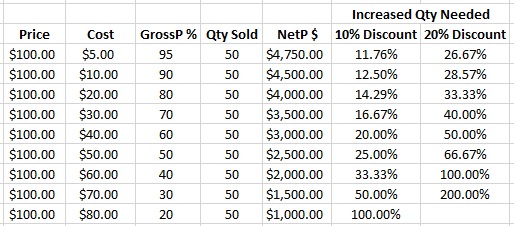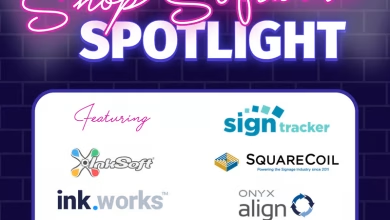
I’m serious. Stop it. You do not need to cut your price to win a sale. A sale is won on value, not price. When there is no value demonstrated, price becomes the easy go-to. You need to maintain revenue.
“My competition discounts”
Adam Smith, the Father of Capitalism, wrote in his book “Wealth of Nations” about the invisible hand of the market that constantly seeks out the best value. When you and your competition ask for money without giving the prospect other ways to understand value, money becomes the only value the prospect understands. To go one step further, if they don’t understand your value, they will want to part with even less of theirs — money. It’s the easiest thing for your prospects to understand. We seek easy. It’s human nature.
Think about a subject you know really well. Explaining it to someone else should be easy for you.
“If you can’t explain it to a six-year-old, you don’t understand it yourself.”
― Albert Einstein
Do you know what’s really difficult to explain to a 6-year old? Value. I know. I’ve tried it and failed multiple times.
How to demonstrate value
The pages of this website are full of examples of value and how it can be transferred to your customers. Education is by far the easiest way to communicate value. Teach your customers your process and what’s involved in your workflow. A little transparency goes a long way. It’s also a great method to challenge your competition to do better. An informed customer will seek the best value in town, not the best price. Once they understand what they are getting, they will be willing to pay more. When you can’t communicate value, or your customers won’t listen, that’s when you get stuck in price comparisons and discounting.
Discounting is an illusion
Here’s the thing about discounting, it’s an illusion. In a study of “the relationship between perceived value and purchase intentions in the context of online apparel products,” researchers leveraged the price-quality-value model and the means-end model to understand the effects of discounting on consumer psychology. In this case, buying apparel online.
The researchers discovered (surprise, surprise) people love discounts. The study looked at purchasing items of clothing from a website. They chose this metric because of the nature of clothes shopping – customers wear the item, so texture and fit are important things to consider. When buying online, they have no idea of the texture or fit. Thus, they revert to the lowest common denominator – price. There is too much risk in buying it without knowing they are getting a really good deal. Large monetary savings offers enough security to overcome the risk of making a bad purchase decision.
Here’s the interesting part: If the study participants liked the item (a pair of jeans or a T-shirt), the rate of discount only increased their interest as the discount went higher. But, if they didn’t like the item or had no positive feelings about it, the rate of discount increased their perception of low quality.
Pause for a second. How much do you think your customers really understand about your products and services? If it’s something they don’t already have an emotional connection to, like a shirt, a discount only makes things worse.
People buy on emotion and justify their purchase later with logic.
Emotion sells, not price. FOMO (fear of missing out) is the largest contributor to impulse buys. Work on generating an emotional connection with your products. Work on establishing value.
Discounting costs you more
Let’s look at a sample scenario where you know the cost of an application. Calculate your gross profit on that application:
Gross Profit = Price – Cost
When you discount the price by just 10%, you need to sell a minimum of 12% more of the same item just to get back to your original profit. With a 20% discount, you need to sell a minimum of 26% more to get back to your original profit. See an example in the chart below.

That just brings you back to zero. You’re not growing the business this way. Protect your margins!
The Small Business Administration says 90% of small businesses fail. The most common reason given: “The money ran out.” That means cash flow. You need to keep every cent coming in. You can’t keep the money if you’re discounting.
Provide ridiculous value
The best option for any small business is to provide ridiculous value, so the prospect has no reason to think about price. Consider ways to add value while maintaining your price:
- Offer Double
- If a $100 product costs you $5 to make: You clear $95 on each product. When a customer comes in and says, “The shop down the street sells the same thing for $75,” offer to give them two of the same item for the same price on this order or a voucher for later.
- Why? Because a free item to them is valued at $75. To you, it’s only $5. That’s a $70 swing in value to save the sale and keep a customer.
- By giving two products for the price of one, you keep the $95, and you only lose the cost of the application. So now you made a $90 profit instead of $95!
- Who would turn down a free item just to get a small discount?
- Tchotchke
- Keep a basket of “trinkets and junk” around. Give those away for free to maintain the sale at the current price.
- By throwing in a bunch of extra stuff for free, you are adding value without losing the money you need to keep your business open.
- Gift Cards
- Gift cards mean revenue now in exchange for work later. It’s also a good way to protect yourself from inflation. $95 now won’t buy the same amount as $95 next year.
- Don’t forget other people’s gift cards. Would you pay $5 to save the sale? Starbucks!
- Raffle Big Ticket items
- Pick up a flatscreen TV on Black Friday and keep it in the shop. Offer raffle tickets as part of the job to keep the price fixed.
- Store Credit
- No refunds, but be generous with store credit. You know your cost structure, so you know which products and services you can give away to keep a customer. Give away more than you think is necessary to maintain the customer relationship.
- Bundling
- Keep an eye on the competition and bundle products together in different ranges or quantities than they do, so the prospect has a hard time picking apart individual prices.
- Upsell and Cross-sell
- Tiered pricing can be a useful conversation starter when customers think they know what they want but haven’t explored all the options. If they come in looking for a specific item offered by the competition, consider a higher quality item at the same price.
You can’t have a bottom line without a top line
There is no problem in business that can’t be solved by more revenue. Your job as a business owner is to maximize your revenue. After the money comes in, figure out how to keep it. But never let it slip through your fingers with discounting. There are plenty of ways to provide value. Build up your customer base and your reputation so you can find other ways to grow your profit margins, but never, ever lower your price.




